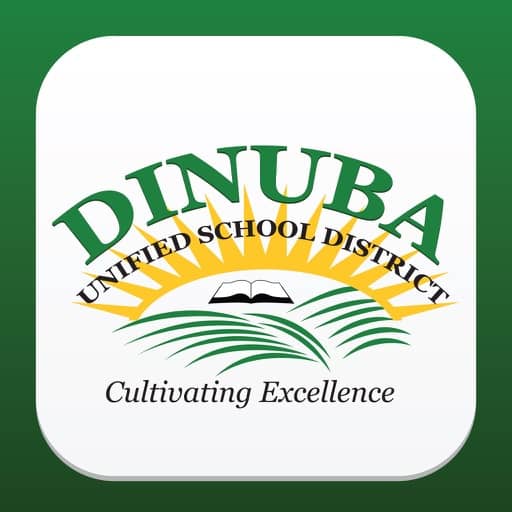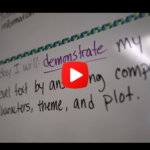
When Vicky Armstrong, chief academic officer at Dinuba Unified School District, first came to the district and visited early elementary classrooms, she didn’t see much student writing posted on the walls or books around the classroom. Teachers were teaching straight from the textbook – page by page. And she could tell teachers felt constrained by teaching expectations, such as checking for student understanding using the explicit direct instruction model exclusively. Creativity wasn’t flourishing.
It had been too long – a good decade – since the district had focused on early literacy and professional development for its teachers, and administrators and teachers could see the impact: Their students were not reading at grade level by third grade. They recognized this as an urgent challenge. “As you go up grade levels, teachers stop teaching how to read and use reading as a way to learn,” explained Vicky. “And challenges with reading impact all other areas of learning – as reading is vital for learning science, social studies and even mathematics.”
Dinuba jumped at their second chance to partner with California Education Partners to make a substantial and meaningful shift in their approach to early literacy. “We built on what we learned from Ed Partners about working across our system to accelerate our progress,” Vicky reflected. “This time, we weren’t learning the process at the same time as we were focusing on our problem of practice, so we went further, faster.”
“Now when I visit early elementary classrooms, I see books everywhere,” Vicky shared. “When you first walk in, you might see a teacher with a group of students while other students are engaged in reading and writing, individually, with partners or in groups. Later, you would see a whole class lesson with a lot more discussion and engagement around complex texts.” And Vicky shared the results: Not only is early literacy instruction now more dynamic, but test scores have improved. Over 5 years of CAASPP testing, ELA test scores have risen 15%, surpassed the county average, and the gap between state performance and Dinuba has decreased from a 14% gap to a 6% gap. Additionally, reading scores on local measures such as the Developmental Reading Assessment (DRA2) have continued to improve.
The Ed Partners collaboration brought Dinuba into a community of peer districts where they
engaged in an intentional process to pull back to the big picture and analyze the problem from a number of angles. They focused on rethinking professional development by piloting approaches in small groups and strategically using coaches to support the change ideas being tested.
Let teachers lead
After the first partnership with Ed Partners, Dinuba continued to embrace the recommended team structure of bringing in a variety of voices, from the teacher to the superintendent level, to challenge each other’s assumptions. This approach created a lasting practice with the Dinuba team. Vicky noted, “Ed Partners guided us to surface solutions from our experience, and we took that approach to our teachers. We respect that they are the ones doing the classroom work, so we explored ways to create the conditions which help them reach new outcomes with their students.”
Throughout the process and as Dinuba built this capacity, teachers took notice. Dinuba teacher Elizabeth Ramos said the Ed Partners approach helped teachers feel seen and honored for their experience. “We got the message, ‘You guys are the experts, and we’re respecting that you’re the experts. We’re not going to tell you, you have to do this or do that.’”
Also building off the first phase of work with Ed Partners, the Dinuba team set up bimonthly professional learning community gatherings for the early literacy work, with teacher leads and coaches, known as Professional Learning Community (PLC) huddles. These huddles harnessed the collective power of teacher leadership and have been transformative for teachers to this day.
Start small, start with a vision
Through the partnership, Dinuba embraced another technique that carried over from their first cohort with Ed Partners: starting small and then growing what works. They followed this model with their PLC huddles, which include a teacher from each elementary school who would then share back with their peers. When Dinuba’s district leaders saw how impactful this approach was, they scaled it, and now teachers across grades are included and the huddles are a space for ongoing rich conversation across teacher teams.
At this phase, getting buy-in from teachers was crucial, and Dinuba district leaders worked with Ed Partners to build consensus around the way forward. “We needed to create a shared vision of what guided reading would look like,” said Vicky. “With Ed Partners’ guidance, we worked with teachers to build a guidebook that painted a picture of what literacy instruction could look like, and then we designed a classroom learning walk tool that emphasized those shared priorities, so teachers had clarity about how to align instruction with the guidebook that they helped build.” The learning walk tool was developed using the process, training, and calibration techniques learned in the previous Math in Common collaboration and applied to the Early Literacy work.
Grow what works
Dinuba district leaders made sure to make this an opt-in effort, knowing they could build will and excitement among teachers if participation was a choice and if the program really seemed to foster results. Vicky reflected: “We invited teachers to visit other schools implementing the practices learned in coaching sessions, and they got to be part of a cohort where they really opted in. And that created a grassroots-level buzz that got even more teachers excited to join in, which never would have happened if we’d made this mandatory.”
The results of Dinuba’s improvement work are significant. Teachers who participated in coaching sessions had students who outperformed those whose teachers did not participate and this program analysis was critical to successfully scaling this offering. The PLC huddles foster camaraderie and connection between teachers and inspire them to present new ideas and work through them together. Elizabeth piloted a new reading approach in her classroom, and the students loved it. She reflected, “The early literacy work has equipped me to bring a variety of exciting and innovative reading approaches to my classroom, including reading stations, techniques to sound out challenging words, guided reading that combines independent work with peer collaboration and more.”
This approach to reading moved the needle for students and created a lasting impression. “My reading groups and other reading practices have been really successful,” Elizabeth shared. “Even as my classroom has gone virtual, my students have asked about reading groups. They wanted to make sure we would continue doing them even in our online classes.”
This positive change is happening across classrooms in Dinuba. “If you go into the classrooms now, you see books everywhere,” said Vicky. “You see active reading collaboration, with teachers and groups of students engaged in reading and writing workshops, even using more complex texts. The discussions are much richer and the classrooms much brighter.”
